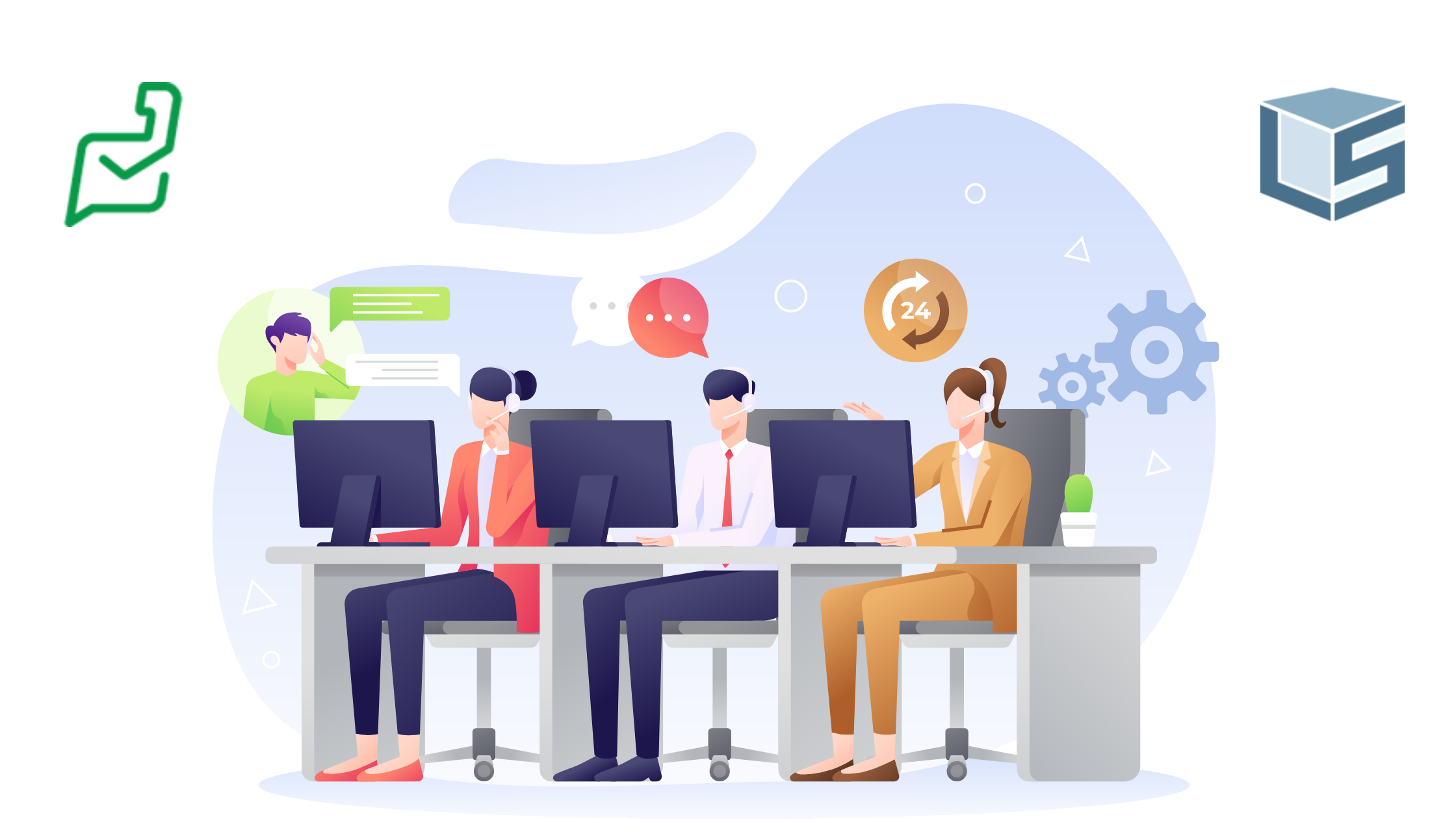2021 holiday season, especially the BFCM period, witnessed one of the busiest e-commerce seasons ever to be recorded.
The US holiday e-commerce sales hit $206.88 billion and accounted for a record 18.9% of total holiday season retail sales. – eMarketer
This colossal success can be attributed to factors brooding over a couple of years such as the increased number of online shoppers and the extended BFCM run (due to the pandemic-induced change in the shopping habits).
If you remember, BFCM was a time when order volumes were high and shipping carriers were straining to meet delivery promises, increasing the magnitude of the problem multifold for the upcoming Holiday season.
Ensuring quality customer support helps you handle all of these without a worry. On the other hand, failing to do so can cause further trouble to your e-commerce business.
But was it truly exceptional customer service that helped businesses equip themselves to handle these challenges better?
To understand the magnanimity and study the impact of this behavioral shift, we partnered with our friends at Zoho Desk to study the metrics on customer service around BFCM. Here’s what we found.
Important BFCM-related Customer Service Metrics
Channels used to raise tickets
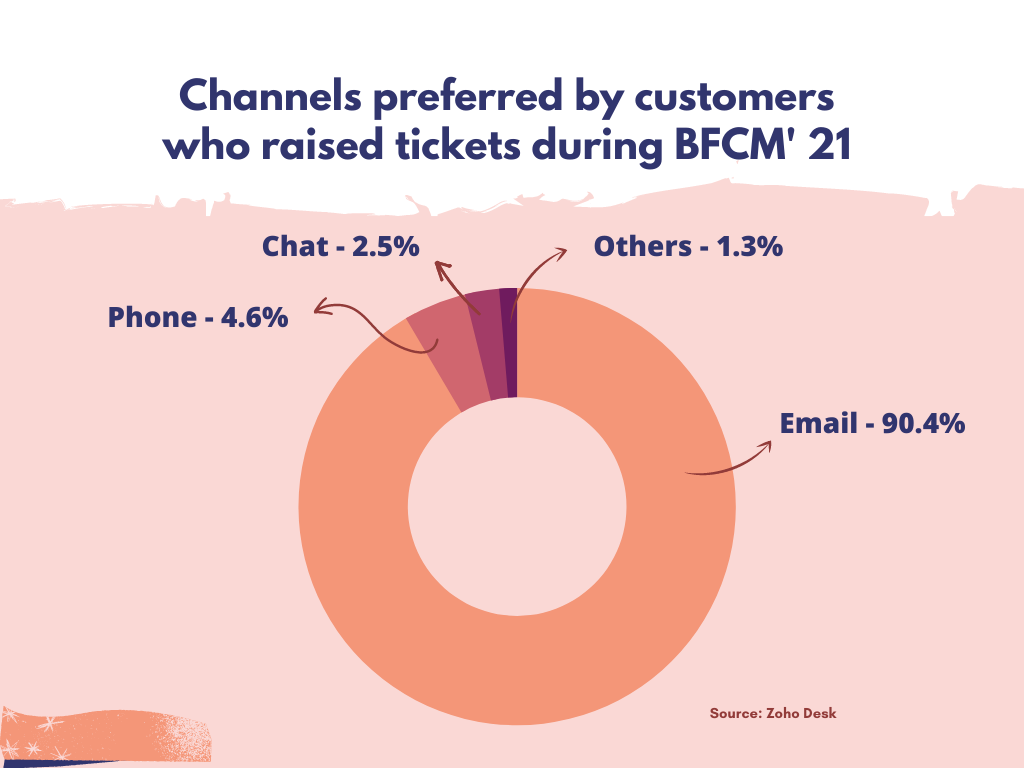
Let’s start with the most obvious. How did customers reach out to businesses with their queries in the first place?
Knowing your customers’ preferred channels can help you be prepared to reach them at any of them and not miss out or provide a delayed response. Because not doing so can result in weaker relationships and customer churn.
During BFCM 2021, Emails were primarily used to raise tickets, accounting for more than 90 percent of the tickets raised. Telephony and chat assistance took the consecutive places after email.
Ticket Volume during BFCM
The primary task of any help desk is to maintain a consistently low ticket volume. But the phase of BFCM saw about a 50% increase in ticket volume.
The reason behind it is pretty obvious. Customers are almost always demanding, can be either obvious and stupid, or their issues can be way too difficult for you to resolve. But we can’t blame them. Customers can get easily frustrated due to their impatience resulting from anticipation.
This sometimes leads them to bombard your support reps with inquiries and thus increase the ticket volume. To avoid this situation, you need to look forward to resolving incoming tickets at a steady rate and make way for fresh tickets.
However, despite the help desk maintaining a healthy ticket churn, tickets still tend to pile up. This might be an indicator of underlying problems with the help desk

The period between Nov 19th and 25th saw a 20% increase in incoming ticket volume, summing up to a total of 3,026,666 overall tickets.
The second window [Nov 26th – 30th] saw a further increase in incoming ticket volume – 3,235,508; another 10% rise from the previous number, totaling up to a whole 50% increase in incoming tickets.
Average Response Time
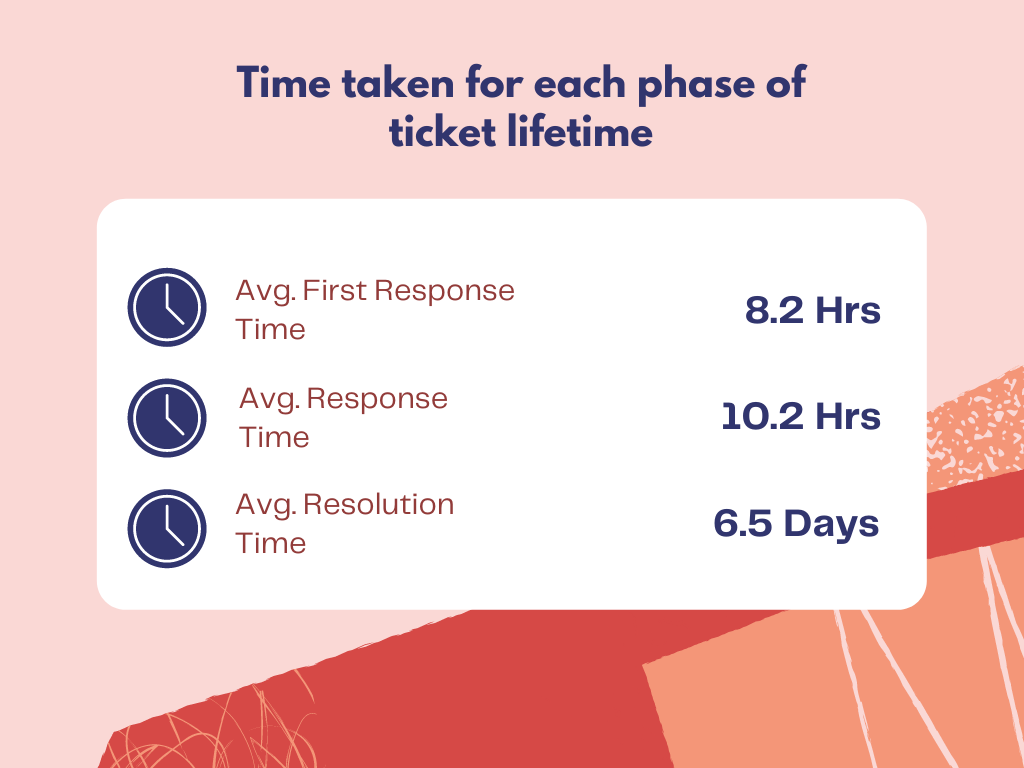
One way of preventing tickets from piling up is by reducing the time taken to resolve each of them. To do that, you need to equip your support team with all the required data that can help them resolve issues faster.
However, that wasn’t the case with most businesses during BFCM.
The Average First Response time was recorded at 492 minutes, while the average resolution time took 9337 minutes. That is, it took an average of 6.4 days to resolve an issue reported by a customer during the BFCM period.
The above stats are in contrast to what customers expect of their brands. To give you some context, this is what a modern customer believes to be the ideal customer support service, according to FinancesOnline.
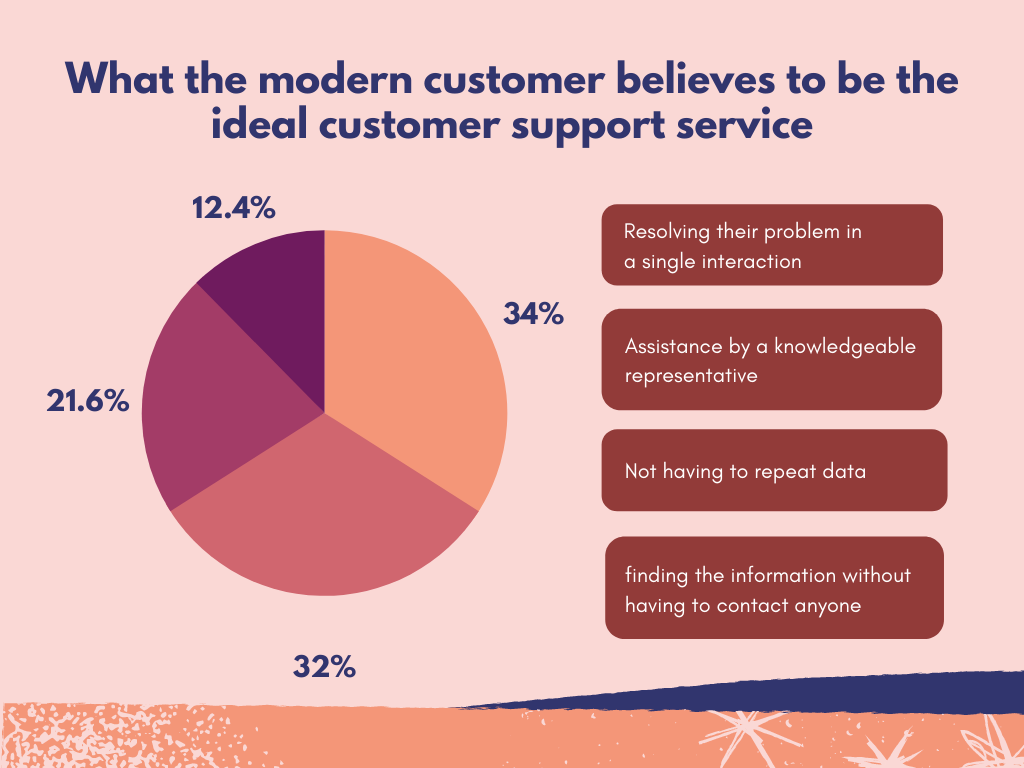
Self-Service is on the Rise
Did you know that customers have always had strong expectations regarding how they want to be serviced? In fact, customers have time after time, stressed on prioritizing customer service over the price, product, or how you sell.
84% of shoppers are willing to spend more to get better customer service and 79% of customers also say that personalized customer support is more important than personalized marketing.
However, customer service can be tricky at times. Not everybody wants to be helped. Many customers are eager to resolve their own issues and go ahead with their day. For such customers, businesses can look forward to making frequent customer queries and issues self-service.
E-commerce businesses can make customer support self-service via channels such as a knowledge base on their website, proactive resolution, help widgets, chatbots, knowledge base, and order tracking pages.
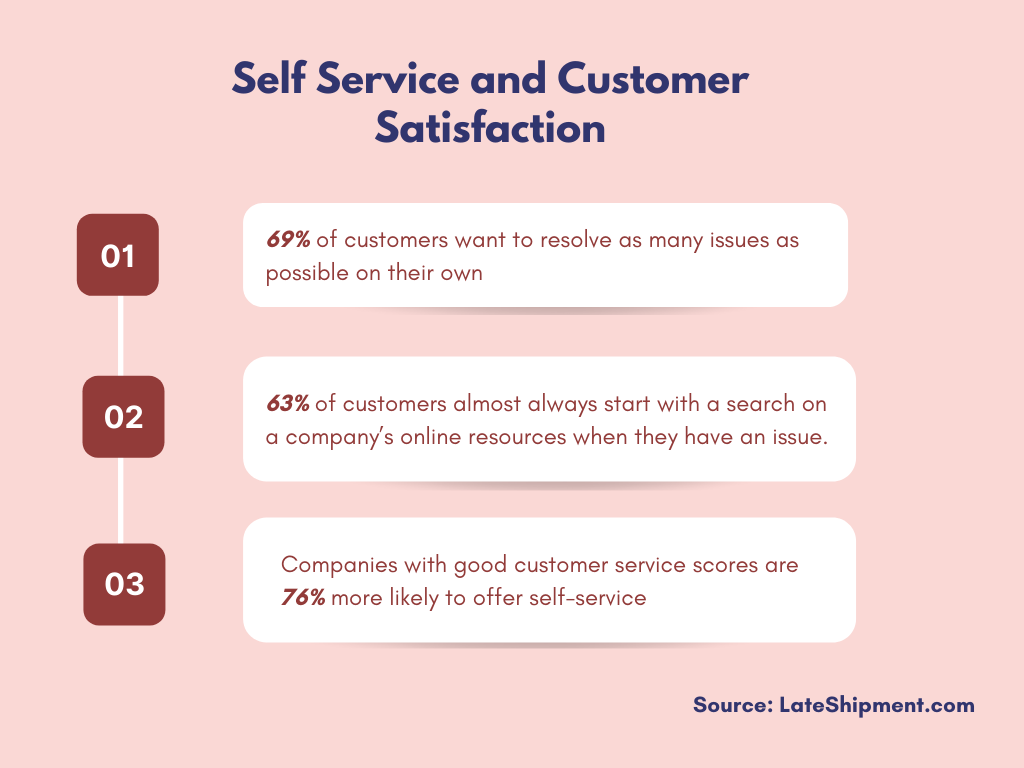
Comparing all the above statistics you would get a clear idea of how far from expectations the actual service was during the BFCM, especially in e-commerce.
Thus, the verdict is clear.
Offering stellar customer support during important Holiday season events such as BFCM can bring in plenty of benefits. To know the benefits, let us get to know what e-commerce businesses such as yours can provide customers with a superior support experience
Importance of Optimizing Your Post-purchase Customer Experience
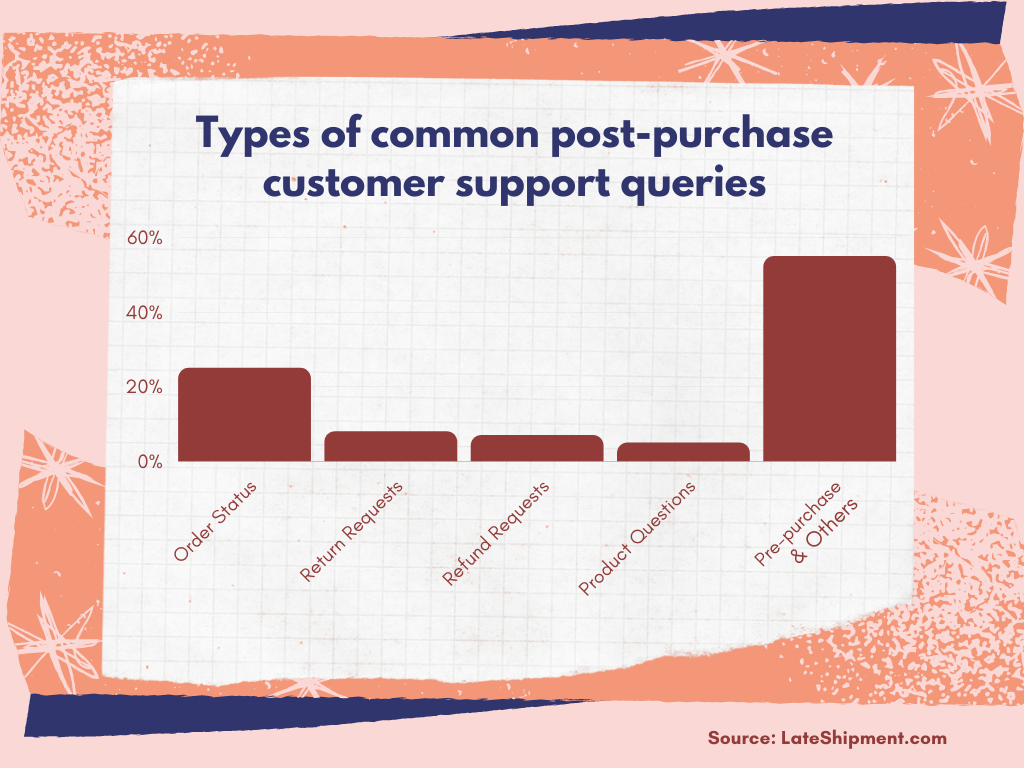
It cannot be stressed enough what a difference, providing a memorable post-purchase experience can do to build strong customer relationships.
Many businesses push the envelope on things like design and marketing and yet ignore the post-purchase experience.
If you take a look at the graph above, you can see that over 40% of the customer support inquiries are post-purchase (shipping, delivery, and returns) related.
The main reason why customer queries during the post-purchase phase are higher than during pre-purchase is that customers’ anticipation is at its peak when they are waiting for their packages and we’re sure your support agents can’t agree more.
So, how exactly can e-commerce businesses improve customer service in the post-purchase phase?
What can companies do to better their customer service game, particularly during the post-purchase phase?
We’ll get straight to the point. It is of utmost importance to address the elephant in the room — the customer services issues during busy times like BFCM.
High ticket volume and prolonged resolution time can be reduced by e-commerce businesses via automation, self-service, and proactive outreach.
First Response time and average response time can also be reduced via automated updates in shipping, returns, and refunds of customers, given that over 40% of all e-commerce queries are post-purchase related.
This is why investing in a postpurchase experience suite would have proven fruitful to the e-commerce brands.
- With separate branded tracking pages dedicated to tracking shipments and refunds, most of the delivery-related queries can be deflected.
- A Delivery Experience Management suite also enables brands to send automated updates that can be customized for their customers. These proactive and empathetic upgrades play a vital role in boosting your customer experience score.
- Be proactive in communicating your delivery updates, particularly those facing delivery issues, by auto-triggering tickets on your helpdesk and bringing down your overall ticket resolution time.
This is just the tip of the iceberg.
Download the infographic to get more insights on customer behavior during the BFCM period, and ensure you go in prepared to wow your customers this BFCM. It’s never too early to get started!
The LateShipment.com x Zoho Desk Advantage
The LateShipment.com integration x Zoho Desk enables your customer support team to:
- Automatically trigger delivery-related tickets for delivery errors that are preemptively pushed to Zoho Desk from LateShipment.com
- Proactively address delivery-related issues from Zoho Desk based on the tickets generated from LateShipment.com by initating contextual communication.
- Set up automated email and SMS notifications for shipping events like “Shipped,” “Out for delivery,” “Attempted,” and “Delivered” to keep customers in the loop of their orders.
- Provide customers with easy-to-track, branded tracking pages, so they can have quick access to their order delivery status
- Capture critical feedback from customers on their delivery satisfaction to improve delivery quality.
That’s not all! Here’s how you can save up to 20% on your shipping costs.
With this integration, you can also take advantage of LateShipment.com’s Parcel Audit and Shipping Refunds solution to automatically identify, file, and recover your shipping refunds effortlessly and save up to 20% on your shipping costs; without changing a thing about your shipping operations!
How to enable the LateShipment.com - Zoho integration
- Create a LateShipment.com account
- Add your shipping carrier details
- Connect your Zoho Desk account
- And you’re set!
That’s all for now! It’s now time for you to start providing better post-purchase experiences while we collect and deposit your refunds.
LateShipment.com for Zoho Desk can be a win for your organization. It only takes two minutes to get started on providing your customers with memorable delivery experiences at scale and saving money.
